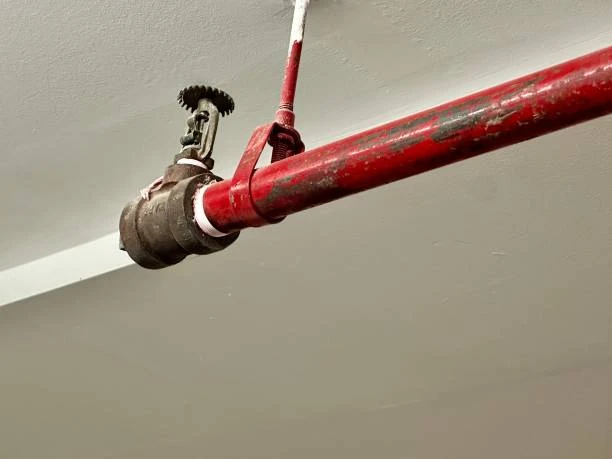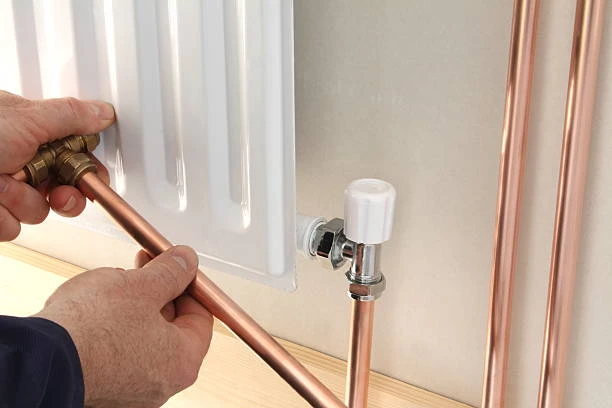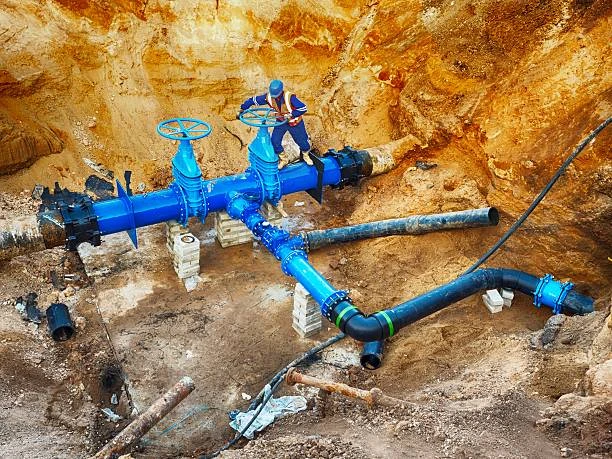In the challenging and ever-evolving oil industry, efficient water management is a crucial component of maintaining optimal production levels and protecting valuable assets. In the Peru oil field, operators have turned to control valves, specifically autonomous inflow control valves (AICVs), to address water-related challenges and enhance production performance. These valves are revolutionizing water control processes, offering increased efficiency, reduced costs, and improved safety. In this article, we will explore the importance of control valves in the oil industry, the role of AICVs in water management, and their impact on operations in the Peru oil field.
What Are Control Valves in Oil Fields?
The Role of Control Valves in Oil Production
In oil and gas production, control valves are devices used to regulate the flow of various fluids, such as oil, gas, and water, within the production system. These valves play a critical role in maintaining the correct flow rate, pressure, and temperature, ensuring smooth and safe operations. Control valves can be either manual or automated, depending on the complexity and requirements of the system.
The oil industry faces specific challenges when it comes to managing the flow of water, which is often produced alongside oil. Water can hinder the efficiency of oil extraction, leading to increased operational costs and environmental concerns. This is where advanced control valves like autonomous inflow control valves (AICVs) come into play.
Types of Control Valves
- Ball Valves: Known for their quick on/off action, often used in applications where fast shut-off is necessary.
- Gate Valves: Typically used to fully open or close a pipeline, offering a reliable, low-resistance option for flow control.
- Globe Valves: Used for precise control of flow in applications where adjusting the flow rate is necessary.
- Autonomous Inflow Control Valves (AICVs): A specialized control valve used to regulate the inflow of water and gas in oil reservoirs, improving production and water management.
The Challenge of Water Management in Oil Fields
Water Production in Oil Fields
In many oil fields, especially mature ones, water is produced alongside oil. This is known as produced water, and it can be problematic for operators. The water can come from the reservoir itself or from external sources used for enhanced oil recovery (EOR) methods like water flooding. The challenge lies in managing this water effectively to prevent it from negatively impacting oil production.
Excessive water production can lead to several issues:
- Reduced Oil Recovery: Water can flood the reservoir, making it harder to extract oil.
- Increased Operating Costs: Separating water from oil, treating it for disposal, and managing the water’s impact on the reservoir are costly processes.
- Environmental Impact: Improper disposal of produced water can lead to environmental contamination and regulatory issues.
The Need for Better Water Control
To address these issues, oil operators need efficient methods to control water influx and manage it effectively during production. This is where control valves, particularly AICVs, play a key role.

Autonomous Inflow Control Valves (AICVs) and Their Impact
What Are Autonomous Inflow Control Valves?
Autonomous Inflow Control Valves (AICVs) are advance control devices designed to regulate the inflow of water, gas, and other fluids in oil wells. These valves automatically adjust to varying conditions in the reservoir, such as changes in pressure, temperature, and water cut (the percentage of water in the produced fluids), without the need for manual intervention.
AICVs work by controlling the flow through the valve opening based on preset conditions. They use advanced sensors and actuators to monitor reservoir conditions and automatically adjust the flow to maintain optimal production rates. This autonomous feature allows for real-time adjustments, reducing the need for external control systems and improving operational efficiency.
Key Benefits of AICVs in Water Control
- Improved Water Management: AICVs help manage the water-to-oil ratio by controlling water production, thereby reducing the overall water influx into the system.
- Enhanced Production Efficiency: By optimizing the inflow of fluids. AICVs ensure that oil is produce at its maximum potential. Which minimizing waste and maximizing output.
- Reduced Operational Costs: By automating the water control process, AICVs reduce the need for manual intervention, lowering operational and maintenance costs.
- Increased Well Life: Proper water control prevents issues like water coning, which can damage the reservoir and reduce the life of the well.
- Environmental Protection: AICVs help prevent excessive water disposal, which reduces the environmental impact of produced water and ensures compliance with regulatory standards.
AICVs in the Peru Oil Field
Addressing Water Challenges in Peru’s Oil Fields
In the Peru oil field, operators face significant challenges due to high water production. The Peru oil field is a mature field, meaning that the water-to-oil ratio is increasing, and operators need efficient methods to handle the rising levels of produced water. Implementing AICVs in the field has allowed operators to tackle these challenges effectively.
AICVs are deploy in various wells across the Peru oil field. Which allowing for better control over water influx. By regulating water production, operators can maximize the amount of oil extracted from each well while minimizing the need for costly water treatment and disposal processes.
Real-Time Data and Monitoring
AICVs provide real-time data that allows operators to monitor reservoir conditions continuously. This data enables operators to make informed decisions about production rates and water management, improving overall efficiency and reducing the risk of well damage. Furthermore, the valves can be remotely adjust or shut off if necessary. Which offering enhanced flexibility in managing the field’s water-to-oil ratio.
Successful Case Studies in Peru
The use of AICVs in the Peru oil field has led to measurable improvements in production efficiency and water management. Operators have reported:
- Reduced Water Cut: The ability to control water influx has decreased the amount of produced water, leading to more oil recovery.
- Cost Savings: With better water control, operators have significantly reduced the costs associated with water disposal and treatment.
- Environmental Compliance: The efficient management of produced water has helped operators meet environmental regulations while minimizing the ecological impact.
The Future of Water Control in Oil Fields
Advancements in Valve Technology
As the oil and gas industry continues to evolve, the demand for more efficient, sustainable, and cost-effective solutions grows. The use of control valves like AICVs is expect to expand. Which with advancements in technology further improving their capabilities. Smart valves, for example, could offer even more precise control through real-time data analysis, predictive maintenance, and enhanced automation.
Expanding Use of AICVs in Other Oil Fields
While the Peru oil field has seen significant benefits from AICVs, these valves are likely to be adopt in other oil fields around the world. Which particularly those with high water production issues. As the technology matures, more oil operators will turn to AICVs to optimize their water management and improve overall production efficiency.
Conclusion
The introduction of autonomous inflow control valves (AICVs) in the Peru oil field has marked a significant step forward in managing water influx and improving oil production efficiency. By automating water control and providing real-time monitoring, AICVs enable operators to better manage their resources, reduce operational costs, and comply with environmental regulations. As the technology continues to evolve, it holds the potential to revolutionize water control in oil fields worldwide, ensuring a more sustainable and efficient future for the industry.
FAQs
1. What are Autonomous Inflow Control Valves (AICVs)?
AICVs are advanced control valves that automatically adjust to regulate the flow of water and other fluids in oil wells. Which optimizing oil production and managing water influx without manual intervention.
2. How do AICVs improve water control in oil fields?
AICVs help regulate the flow of water in oil fields by automatically adjusting based on real-time reservoir conditions, reducing water production and ensuring more efficient oil extraction.
3. What benefits do AICVs provide in oil field operations?
AICVs offer improved water management, enhanced production efficiency, reduced operational costs, increased well life, and environmental protection by reducing the need for water disposal.
4. Where are AICVs useful in oil fields?
AICVs are being deployed in various oil fields, including the Peru oil field. Where they have helped address high water production and maximize oil recovery.
5. Can AICVs be remotely adjusted or monitored?
Yes, AICVs provide real-time data and can be remotely adjusted. Which allowing operators to make informed decisions and ensure optimal water-to-oil ratios.


















